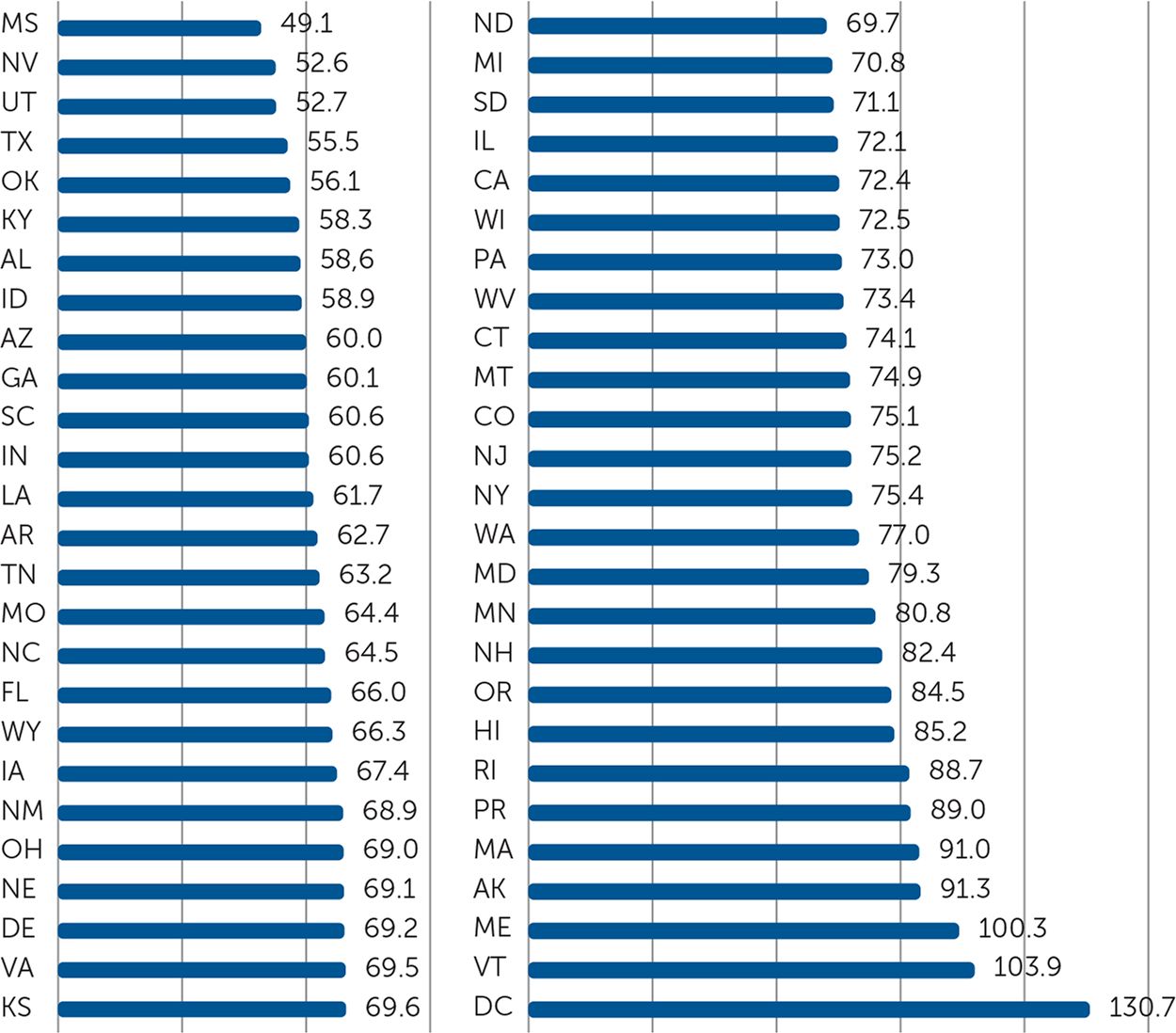
Am Fam Physician. 2021;104(2):133-134
Related editorial: Graham Center Policy One-Pagers Provide Perspectives on the State of Primary Care
Author disclosure: No relevant financial affiliations.
Despite representing only one-third of the physician workforce in the United States, primary care physicians (PCPs) are the first contact with the health care system for most patients.1 A 2010 report by the Council on Graduate Medical Education (COGME) recommended that 40% of the physician workforce be comprised of PCPs, with evidence demonstrating that optimal health outcomes are achieved with this proportion.2,3 However, the number of PCPs in the United States has been declining for decades.2 In addition, there are geographic disparities in the distribution of the existing physician workforce.2,4
The Robert Graham Center, with researchers at IBM Watson Health and the American Board of Family Medicine, published a report examining state-level variation in PCP density.5 Using 2019 data from the American Medical Association Physician Masterfile and the U.S. Census Bureau, the ratio of PCPs per 100,000 residents was calculated.
As shown in Figure 1, there is considerable variation by state. Mississippi has the lowest PCP-to-population ratio, with 49.1 PCPs per 100,000 residents, whereas the District of Columbia has the highest ratio at 130.7 per 100,000.5 Differences in retirement trends and rurality of states complicate these data because some states with a higher PCP density, such as Vermont, also have a large percentage of family physicians reaching retirement age. On the other hand, many states with an already low PCP density, such as Mississippi, are at risk of losing even more PCPs to retirement.6

These trends in geographic distribution highlight the gaps in our shrinking national PCP workforce. Policy advances are needed to recruit medical students into primary care, expand residency training programs, engage a rural workforce, and retain current PCPs to address these widening gaps, which intimately affect access to care and national health outcomes.
